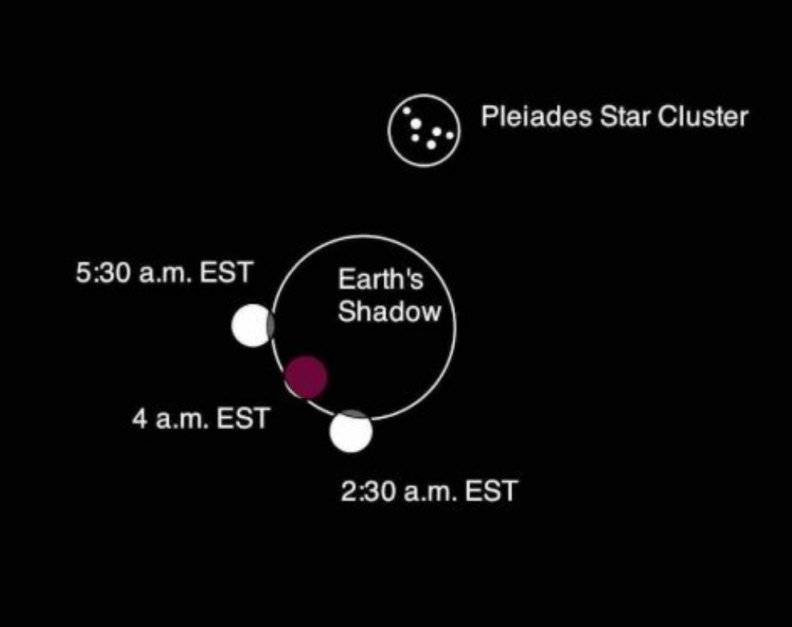Deep partial lunar eclipse November 18-19: Great for North America

Partial lunar eclipse
A deep partial lunar eclipse will darken the moon for much of the globe on November 19, 2021 (overnight on November 18 for North America). Most locations will see up to 97% of the moon slip into Earth’s shadow. North America has the best location to see the entirety of the eclipse. Find maps and timing for the eclipse below. In some cases, the times are in UTC and you must convert.
This is an exceptionally deep partial eclipse with an umbral eclipse magnitude of 0.9742. In other words, 97% of the moon will be covered by Earth’s dark umbral shadow. With a just thin sliver of the moon exposed to direct sun at maximum eclipse, the rest of the moon should take on the characteristically ruddy colors of a total lunar eclipse.
This is the second lunar eclipse of 2021. See photos of the May 2021 lunar eclipse.
This eclipse occurs at the moon’s ascending node in Taurus. The moon will be placed near the famous Pleiades – aka the Seven Sisters – during the eclipse. Great photo opportunity!
The eclipse takes place 1.7 days before the moon reaches apogee (November 21 at 02:14 UTC), its farthest point from Earth for this month. For that reason, this is also the longest lunar eclipse in a span of some 1,000 years. Read more about the length of this lunar eclipse.


Who will see the partial lunar eclipse
Viewers in North America and the Pacific Ocean, Alaska, eastern Australia, New Zealand and Japan will be able to see the entire partial lunar eclipse. Observers in western Asia, Australia, and New Zealand miss the early stages of the eclipse because they occur before moonrise. Similarly, South America and Western Europe experience moonset before the eclipse ends. None of the eclipse is visible from Africa, the Middle East, or western Asia.
At the instant of greatest eclipse (09:02:56 UTC) the moon lies at the zenith for a point in the Pacific Ocean east of the Hawaiian Islands. The moon’s southern limb lies 0.8 arc-minutes outside the edge of the umbral shadow.
Comment from Fred Espenak: This is an extraordinary test case for a marginally partial eclipse.


Eclipse times
The times of the major eclipse phases are listed as follows. These times are in Universal Time (UTC); translate UTC to your time.
Penumbral Eclipse Begins: 06:02:09 UTC on November 19
Partial Eclipse Begins: 07:18:43 UTC (2:19 a.m. EST in North America)
Greatest Eclipse: 09:02:56 UTC (4:03 a.m. EST)
Partial Eclipse Ends: 10:47:07 UTC (5:47 a.m. EST)
Penumbral Eclipse Ends: 12:03:44 UTC (7:04 a.m. EST)
Find eclipse timings for your location at timeanddate.com.
Also see this Key to Lunar Eclipse Figures.

Saros and eclipse season
The eclipse belongs to Saros 126 and is number 45 of 70 eclipses in the series.
All eclipses in this series occur at the moon’s ascending node. The moon moves southward with respect to the node with each succeeding eclipse in the series, and gamma decreases.
The partial lunar eclipse of November 19, 2021, is followed two weeks later by a total solar eclipse on December 4, 2021.
These eclipses all take place during a single eclipse season.

Bottom line: A partial lunar eclipse will occur on Friday, November 19, 2021 (overnight November 18 for North America). It will be visible from the Americas, North Europe, eastern Asia, Australia, and the Pacific. Find eclipse timings for your location at timeanddate.com.
Read more: November 2021 partial lunar eclipse longest for 1,000 years











